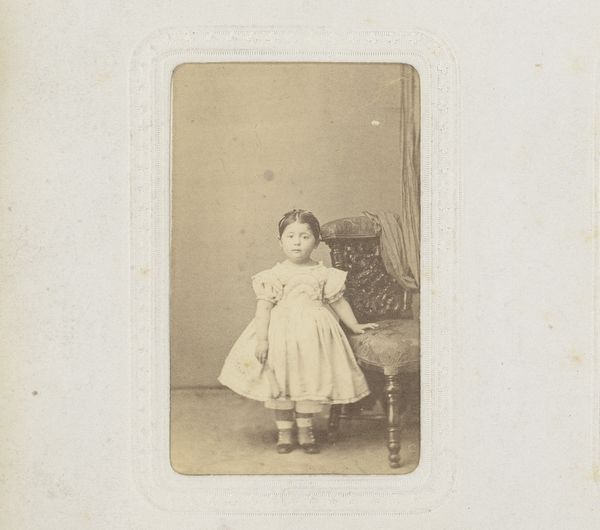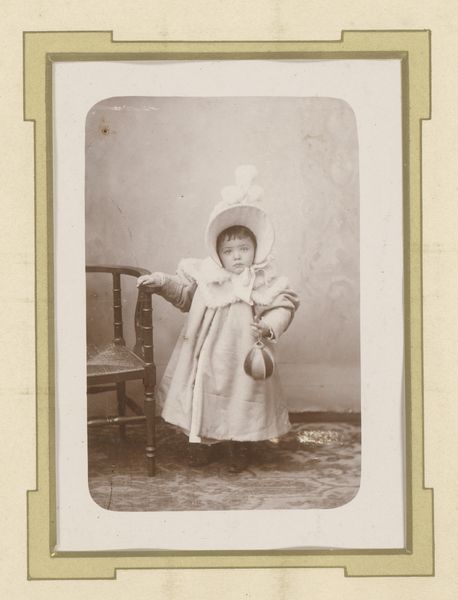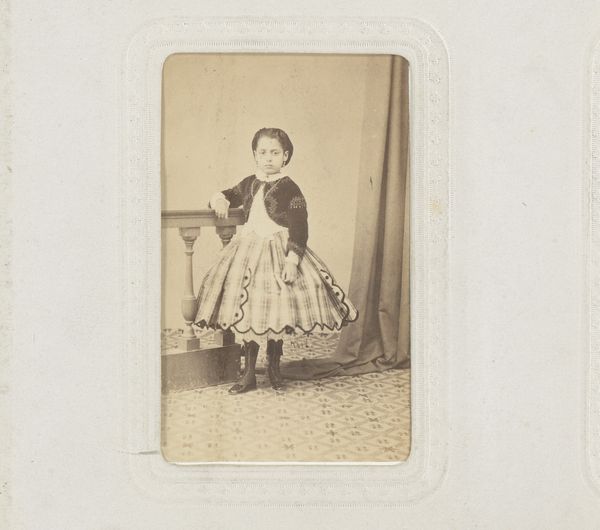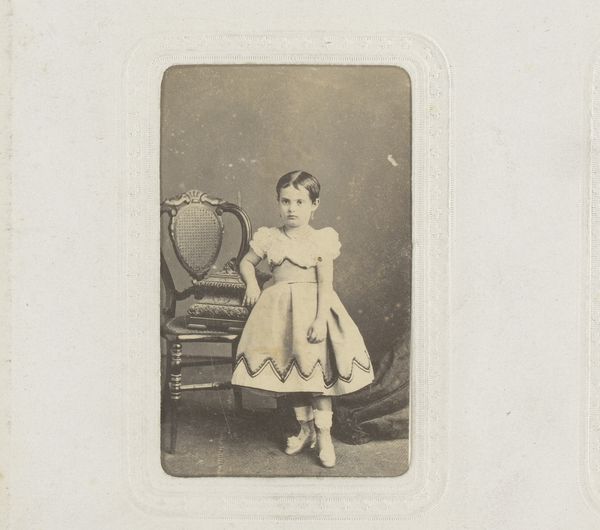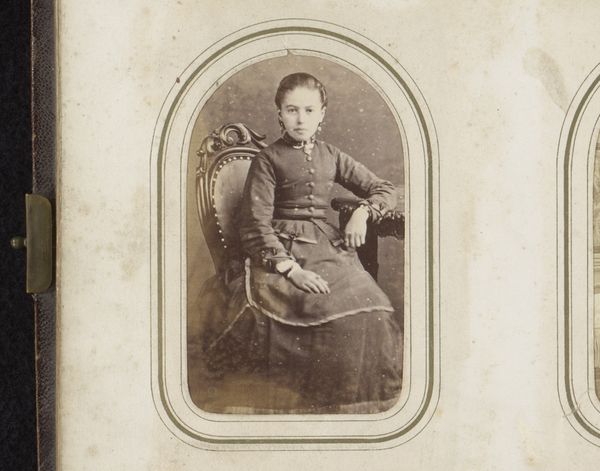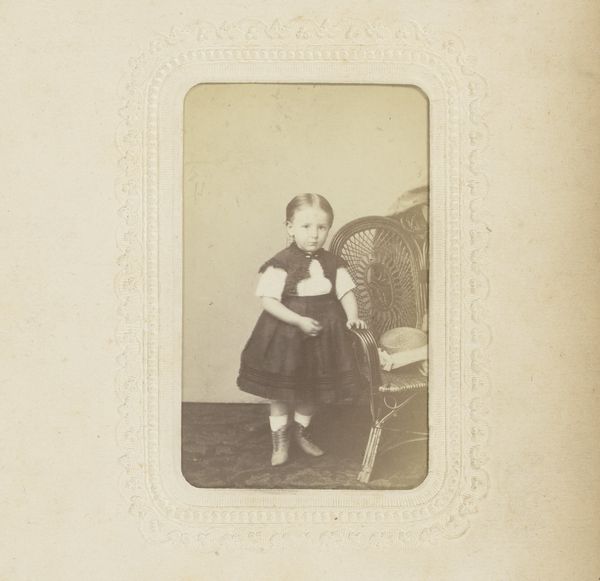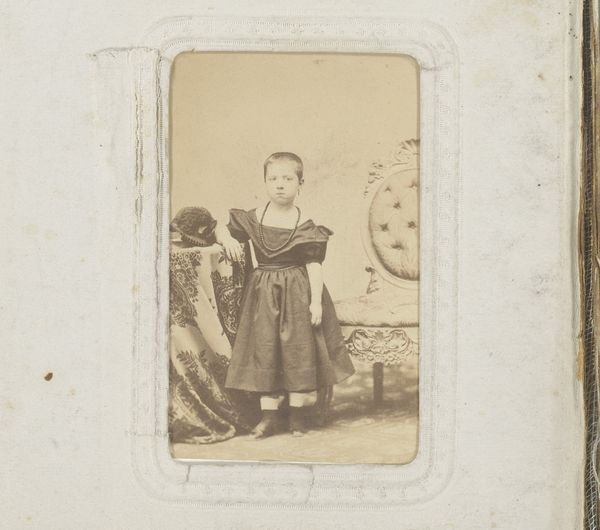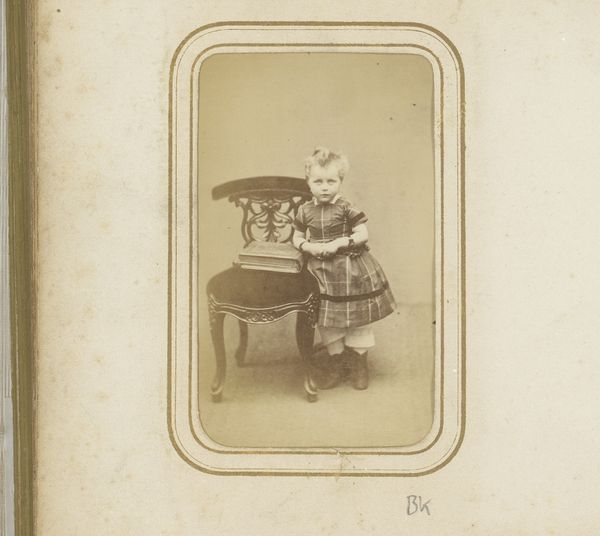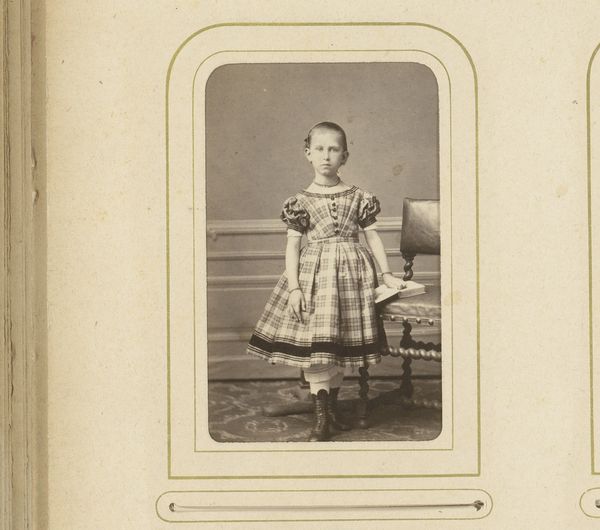
photography
#
portrait
#
photography
#
genre-painting
Dimensions: height 103 mm, width 64 mm
Copyright: Rijks Museum: Open Domain
Curator: This is "Portret van een onbekend meisje," or Portrait of an Unknown Girl, dating from around 1871 to 1890. It's a photograph by Petz & Co., made in the style of a genre painting. Editor: She seems...solemn. The muted tones only amplify that, like a faded memory. It's captivating, though. It feels very staged, obviously, but with a haunting undercurrent. Curator: Yes, that air of solemnity was quite common for portraiture of that era, partly because of the longer exposure times required, demanding stillness. And the staging is intentional, echoing the compositions and themes explored in genre paintings. It blurs the line between photographic document and artistic creation. Note the draped curtain as a studio prop. Editor: It is interesting that you mention blurring the boundaries of art; that’s exactly what I was getting at with "haunting." It seems odd now, but portraiture from that period – and indeed photography itself – straddled this fascinating intersection. What materials were typically used here? Curator: This would likely be an albumen print, given the timeframe. The process involved coating paper with egg white and silver nitrate, creating a light-sensitive surface. This method offered detailed images and a warm, sepia tone that lends a romantic and nostalgic quality, like we see here. Editor: And you are certainly correct about nostalgic, looking at the photograph brings forth ideas of remembrance, sentimentality. The little girl's gaze, in conjunction with that old fashioned photo quality…It creates a compelling kind of melancholy! She is also in strange dress next to this wheel. What is it for? Curator: Well, during this era photography began being used for personal records or important events like births or accomplishments of any sort for family members. Perhaps her father bought her this small, human sized-wheel? Maybe, too, the family believed showing status mattered most. Editor: Regardless, the solemnness speaks to our own present too. I look at it as almost a form of quiet defiance against our oversharing present. She preserves, so we cannot consume her. Thank you for taking us on this thought! Curator: Of course! Examining this portrait reminds us of photography's journey from a technical process to a means of crafting narratives and memorializing specific classes throughout different eras.
Comments
No comments
Be the first to comment and join the conversation on the ultimate creative platform.
